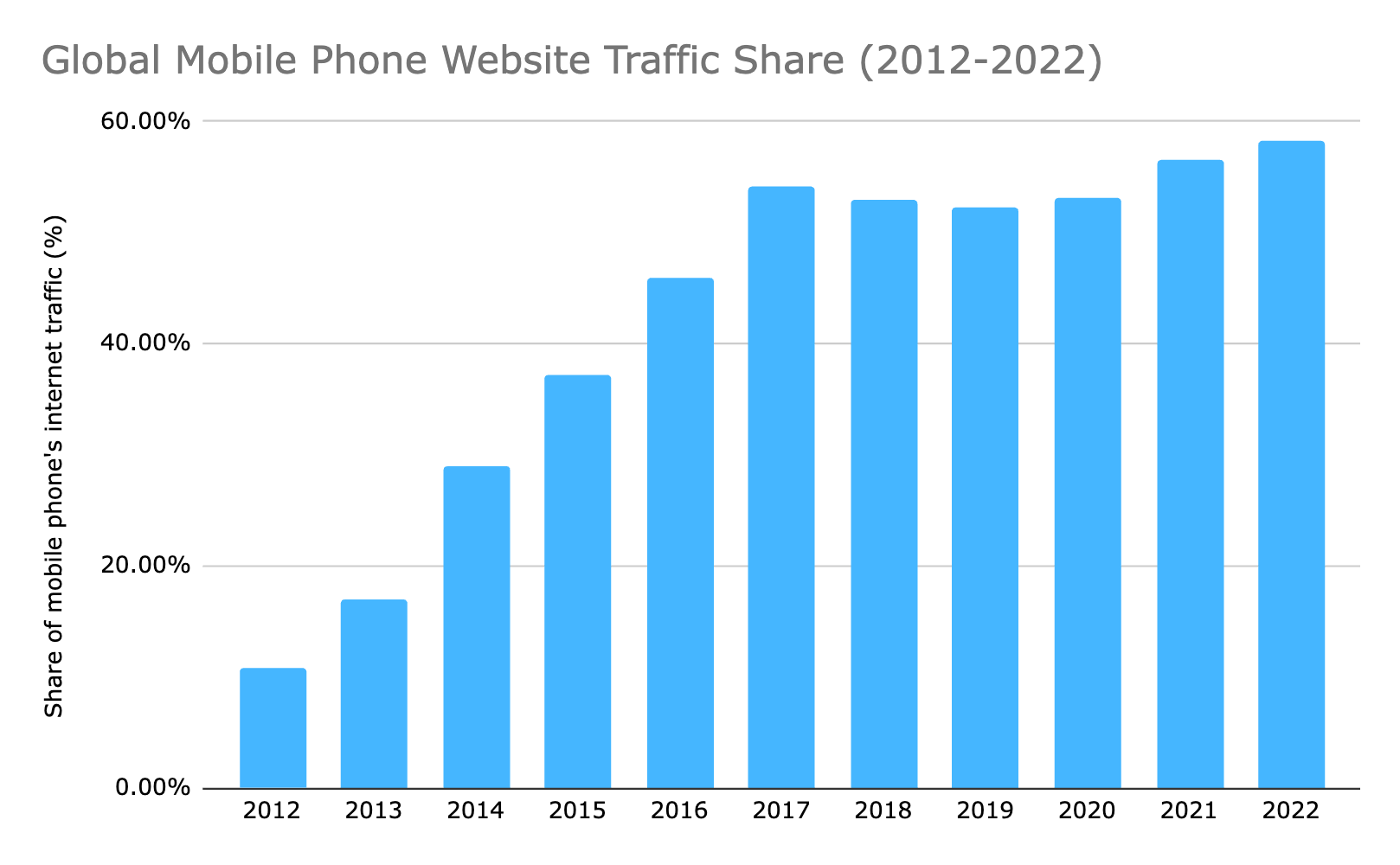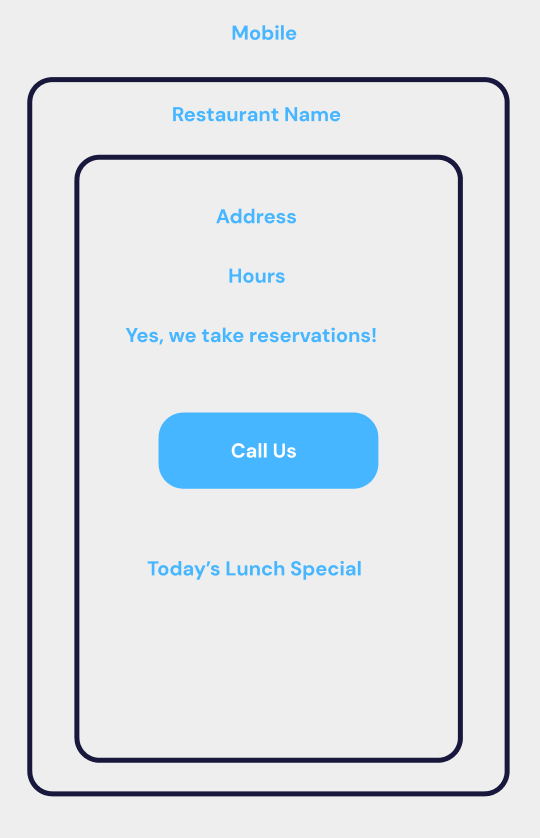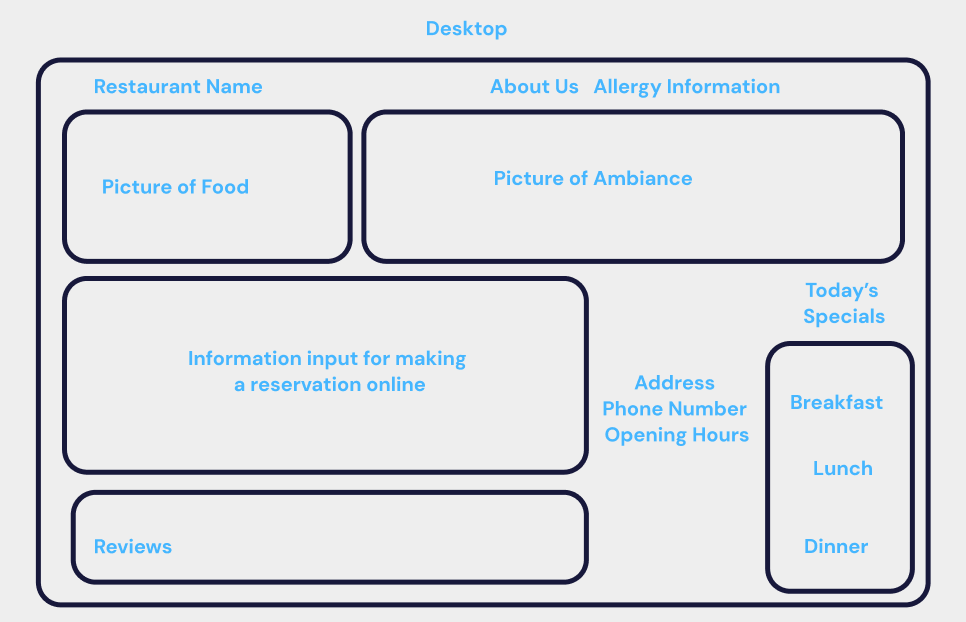How to Think Mobile-First When it Comes to Web Design

The idea of mobile-first design has become popular due to the increasing use of smartphones for browsing the internet and accessing digital content, meaning it’s becoming increasingly important to make sure your site is mobile friendly. Within this blog we’ll look at, among other things, where mobile-first design came from, what it is and its implications for SEO.
How mobile-first design strategy came to be
Originally, websites were developed with an assumption that they’d be accessed from a desktop computer. Eventually, with the creation of smaller screens, such as tablets and mobile phones, developers found the need to modify websites to enhance the user experience on these smaller screens.
What is mobile-first design?
Mobile-first is a design approach that prioritises the creation of a website for mobile devices before designing for larger screens, such as desktop computers or tablets. In other words, it involves designing the user experience and layout with mobile devices in mind, and then adapting and expanding that design for larger screens.
Why mobile-first design is essential
Given the current digital landscape and the user behaviour patterns, mobile first web design has become essential. A large portion of internet users now access websites primarily through a mobile device. On the graph below you can see how quickly the traffic for mobile devices on the internet has increased. The information on this shows how important mobile-first design is for catering to the way users are actually interacting with your content.

What is responsive web design?
Mobile-first often leads to responsive design. Responsive design ensures that your website adapts to different screen sizes, meaning that your site will be accessible and have a consistent user experience across different screen sizes, whether they’re on a desktop, tablet or mobile.
How to Implement Mobile-First Approach in Product Design?
Mobile-first design focuses on creating a user experience optimised for a smaller screen, meaning that designers need to prioritise the essential content, make sure the navigation is easy to follow and ensure that the user interface is easy to use on a mobile device. Things such as load times need to be thought carefully about, meaning larger items on the site, such as images, need to be optimised for performance. Fast loading times are vital for keeping users happy and reducing bounce rates. For example, if a web designer was working on a site for a restaurant and was making sure to follow the mobile-first approach, they need to think about the site from a user perspective and what they would want on the restaurant's site on a mobile. As the user is on a mobile, it would be safe to assume that they were mainly searching for key information about the restaurant, such as the opening hours, address and contact details, meaning the page would need to look something like the diagram below.

If the user was accessing the site from a tablet, they may have a little more time available to them for learning about the site, as you could assume that they were probably not on the move at the time of looking at the site. This means that the web designer could add a little more information and maybe items that require slightly longer loading times, such as larger images. See the diagram below for an example.

When it comes to desktops, web designers have the largest amount of space to showcase more details, have more information and images to really help capture the atmosphere of the restaurant and give the user a real feeling of what the restaurant is like. See the diagram below for an example of a restaurant website layout optimised for a desktop.

What mobile-first means for SEO
But wait, if we have content on mobile that’s different to that displayed on desktop, how do users access all of the information? And will your website rank just as well in search engines?
The answer is no, not really. If your website has different content on the desktop version of your site vs the mobile version, Google will rank you according to the content you have available on the mobile version of the site, meaning that any additional content won’t help you rank.
This is called mobile-first indexing and it’s where Google’s primary crawler is their smartphone agent, meaning they see the mobile version of the website first and foremost.
Search engines, including Google, also consider mobile-friendliness as a ranking factor. Websites that are mobile-friendly and provide a positive experience for mobile users tend to rank higher on results pages. By embracing mobile-first design, you can improve your website’s visibility and potentially attract more organic visitors.
As we saw above, in the last decade there has been a significant rise in the numbers of web users accessing the internet with mobile devices, therefore it makes sense to design your website with mobile-first design in mind, it will not only help your business reap the rewards of mobile growth but also prepare you for the predicted growth in years to come.

